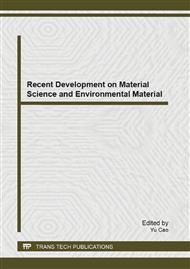p.550
p.555
p.560
p.565
p.569
p.573
p.576
p.580
p.584
Experimental Study of the Porous Plate Hydrodynamic Cavitation Device and Removal the Algae in Water
Abstract:
Design a practical and effective hydrodynamic cavitation experimental apparatus, the establishment of cavitation radical scavenging method, the use of methylene blue to study the relationship of the hydroxyl radical production and cavitation cavitation intensity, the study of the various factors of cavitation radical production, and to explore optimal cavitation strengthen the conditions. Hydrodynamic cavitation kill algae has some effect, there will be varying degrees of decline in the concentration of algae. The hydrodynamic cavitation algae suppression and damaging effects.
Info:
Periodical:
Pages:
569-572
Citation:
Online since:
September 2013
Price:
Сopyright:
© 2013 Trans Tech Publications Ltd. All Rights Reserved
Share:
Citation:


